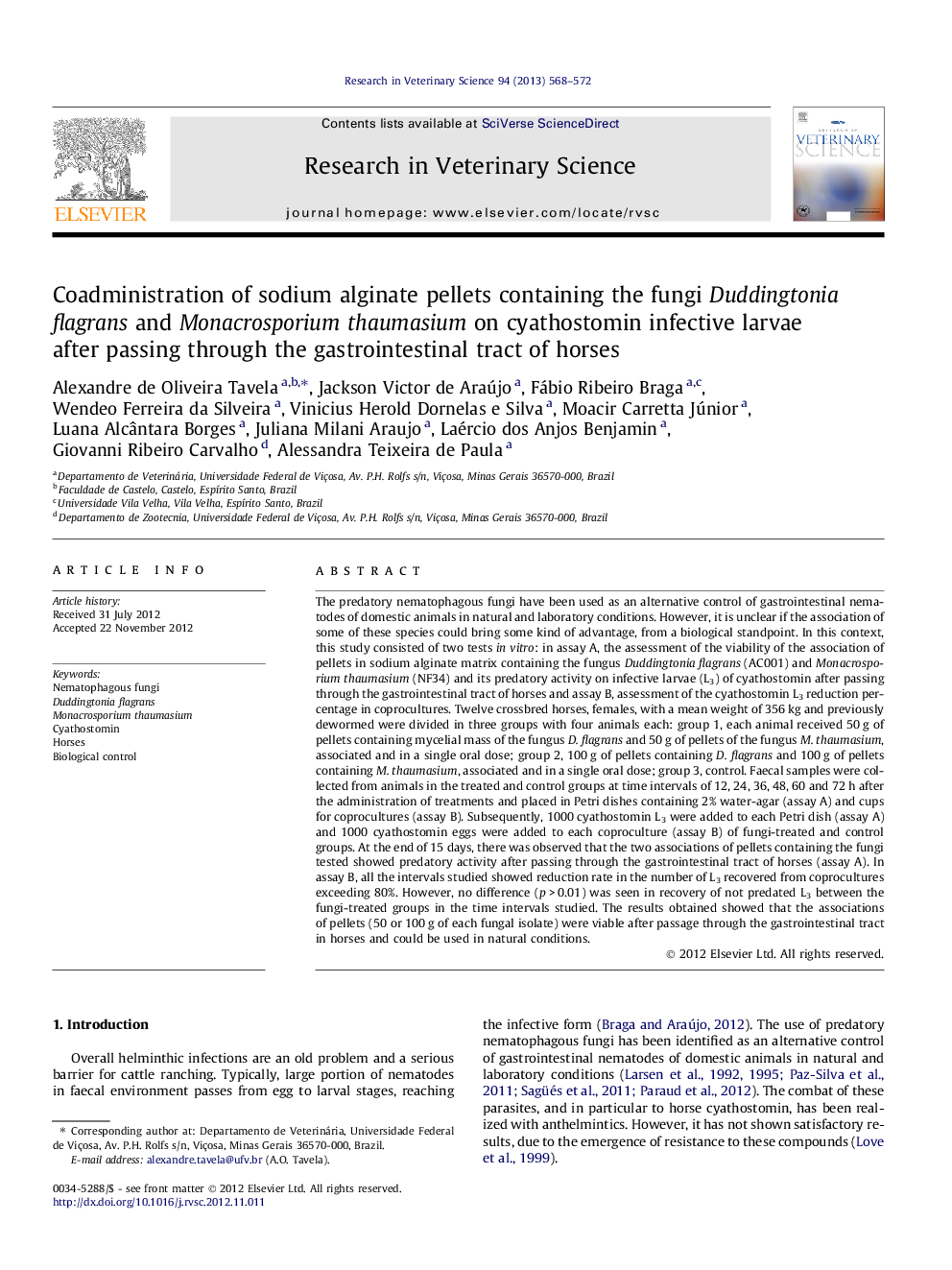| کد مقاله | کد نشریه | سال انتشار | مقاله انگلیسی | نسخه تمام متن |
|---|---|---|---|---|
| 5794916 | 1110501 | 2013 | 5 صفحه PDF | دانلود رایگان |

The predatory nematophagous fungi have been used as an alternative control of gastrointestinal nematodes of domestic animals in natural and laboratory conditions. However, it is unclear if the association of some of these species could bring some kind of advantage, from a biological standpoint. In this context, this study consisted of two tests in vitro: in assay A, the assessment of the viability of the association of pellets in sodium alginate matrix containing the fungus Duddingtonia flagrans (AC001) and Monacrosporium thaumasium (NF34) and its predatory activity on infective larvae (L3) of cyathostomin after passing through the gastrointestinal tract of horses and assay B, assessment of the cyathostomin L3 reduction percentage in coprocultures. Twelve crossbred horses, females, with a mean weight of 356 kg and previously dewormed were divided in three groups with four animals each: group 1, each animal received 50 g of pellets containing mycelial mass of the fungus D. flagrans and 50 g of pellets of the fungus M. thaumasium, associated and in a single oral dose; group 2, 100 g of pellets containing D. flagrans and 100 g of pellets containing M. thaumasium, associated and in a single oral dose; group 3, control. Faecal samples were collected from animals in the treated and control groups at time intervals of 12, 24, 36, 48, 60 and 72 h after the administration of treatments and placed in Petri dishes containing 2% water-agar (assay A) and cups for coprocultures (assay B). Subsequently, 1000 cyathostomin L3 were added to each Petri dish (assay A) and 1000 cyathostomin eggs were added to each coproculture (assay B) of fungi-treated and control groups. At the end of 15 days, there was observed that the two associations of pellets containing the fungi tested showed predatory activity after passing through the gastrointestinal tract of horses (assay A). In assay B, all the intervals studied showed reduction rate in the number of L3 recovered from coprocultures exceeding 80%. However, no difference (p > 0.01) was seen in recovery of not predated L3 between the fungi-treated groups in the time intervals studied. The results obtained showed that the associations of pellets (50 or 100 g of each fungal isolate) were viable after passage through the gastrointestinal tract in horses and could be used in natural conditions.
Journal: Research in Veterinary Science - Volume 94, Issue 3, June 2013, Pages 568-572